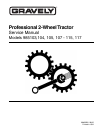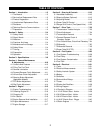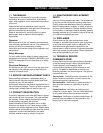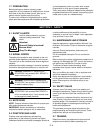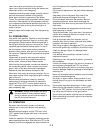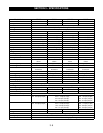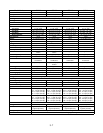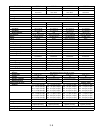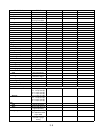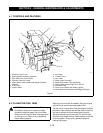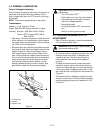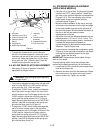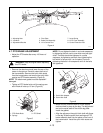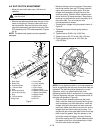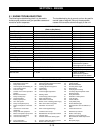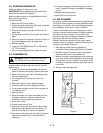
2 -5
Learn the location and function of all controls.
Learn how to use the controls to stop the wheels and
attachment quickly in an emergency.
Understand and follow each danger, warning, caution
and instruction decal installed on this product.
Never permit children to operate the Two-Wheel
Tractor. Do not allow adults to operate it without proper
instruction. Safe operation of this equipment requires
your complete and unimpaired attention at all times. Do
not operate unit after or during the consumption of
drugs or alcohol.
Keep all people and animals away from the operating
area.
2.8 PREPARATION
Use caution with gasoline. Gasoline is very flammable
and its vapors are explosive. Keep it in a clean, tight
and approved (Red) container. Never put gasoline in
the fuel tank while the engine is running or hot. Clean
up spilled gasoline before starting engine. Do not fill
fuel tank indoors. Never allow smoking materials,
sparks or flame (match, pilot light, etc.) near mower or
fuel container. Replace fuel tank cap and fuel container
cap securely.
Inspect area of operation and remove all material
which could be thrown by the attachment such as
stones, sticks, wires and other foreign objects.
When hauling the equipment, connect the chassis to
the transporting vehicle. Never connect from control
levers, rods, or like items that could be damaged.
Replace all parts that become damaged or lost.
Wear hand, foot, head, ear and eye protection. Do not
wear loose clothing, which might get caught in rotating
parts of the unit.
Before making adjustments, cleaning, removing
obstructions or servicing the tractor or attachment
move the PTO to "OFF", turn the ignition switch to
"OFF", remove the ignition key and wait until all moving
parts completely stop.
2.9 OPERATION
Be certain that all shields, guards, and interlock
switches are in the correct position and operating
properly.
Before starting the engine, put the PTO lever in the
"OFF" position and the gear shift lever in the neutral
"N" position.
Check the operation of the operator presence controls
before operating the tractor. With either the PTO or the
direction control lever engaged, the engine should run
only if at least one of the operator presence switches is
depressed.
Do not use the equipment in the dark without adequate
lighting.
Keep away from moving parts. Stay clear of the
attachment whenever the engine is running.
Do not let people other than the operator near the
operating equipment. Never direct disengage the
attachment drive when moving the tractor to and from
work areas.
Use a slow speed and engage the shift lever slowly
when operating on slopes.
Travel across slopes, not up and down. Use extreme
caution when changing direction on slopes. Do not
operate on steep slopes.
Look for and keep away from hazards, such as
dropoffs. Stay alert for holes, rocks and other hidden
hazards in the area of operation.
After hitting an object, disengage the PTO, turn off and
remove the ignition key and wait for all motion to stop.
Check for damage. Repair any damage before
restarting unit.
Look behind when operating in reverse. Look for
people and hazards.
Operate only from the operator’s position, just behind
the handlebars.
If there is a sudden change in the sound or vibration of
the equipment, disengage the PTO, turn off and
remove the ignition key, wait for all motion to stop and
check for damage. Repair any damage or failure before
restarting unit.
Never run the engine indoors except to move it outside.
Exhaust fumes are dangerous.
Go slowly on slick surfaces. Always be sure of your
footing, keep a firm grip on the handlebars and walk,
never run.
Follow traffic laws when operating on or near a road.
Before leaving the operator’s position, put the PTO
lever in the "OFF" position, turn off and remove ignition
key. Move the shift control to first gear position.
Do not touch parts which might be hot from operation.
Before attempting to maintain, adjust or service allow
such parts to cool.
WARNING:
Always block wheels and know
that jack stands or blocks used are stable,
strong, or secure and will hold the weight of
the unit during maintenance.



